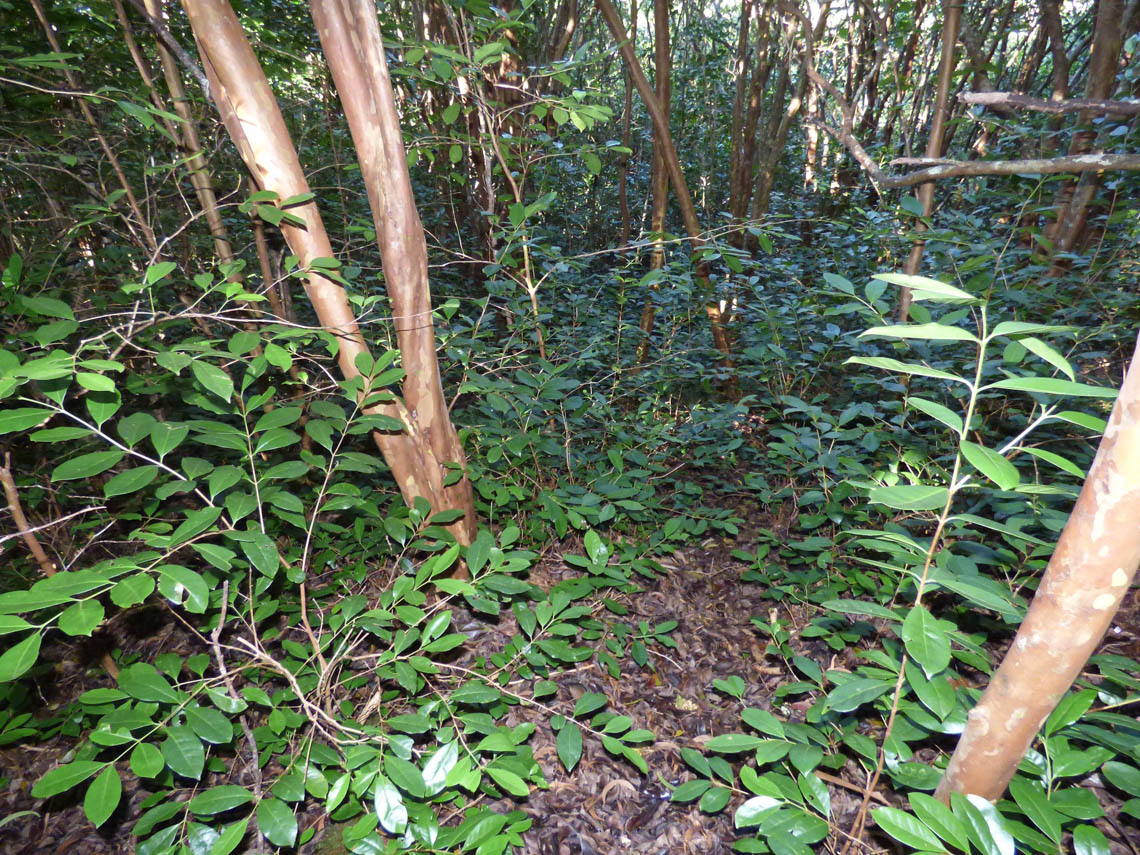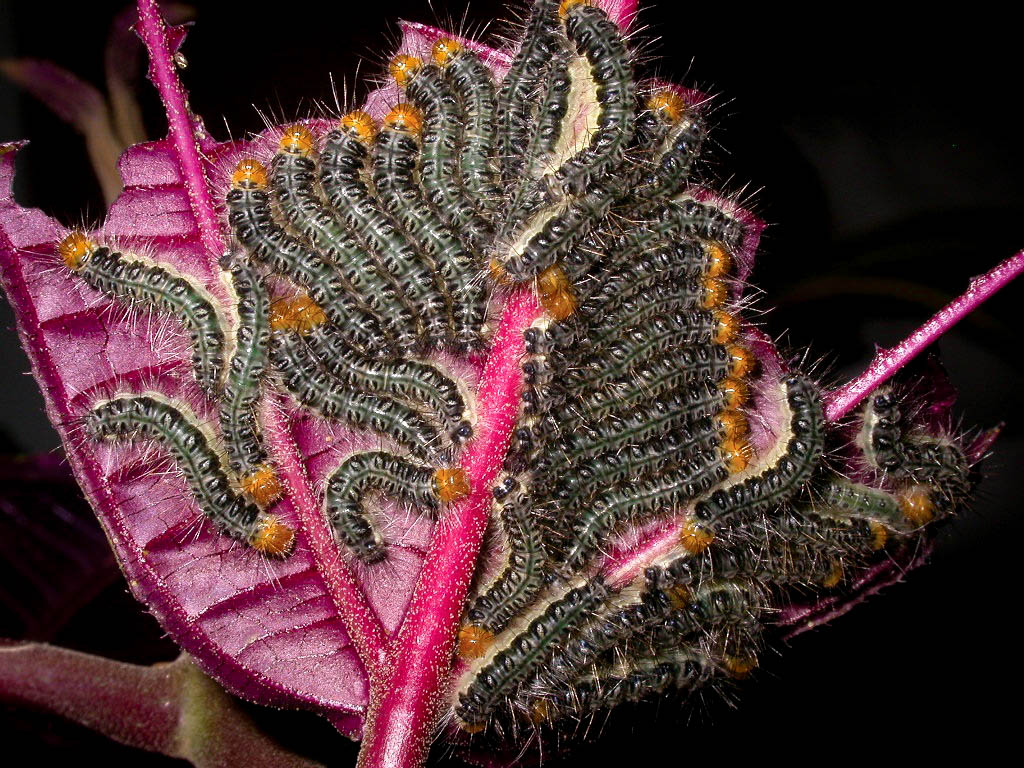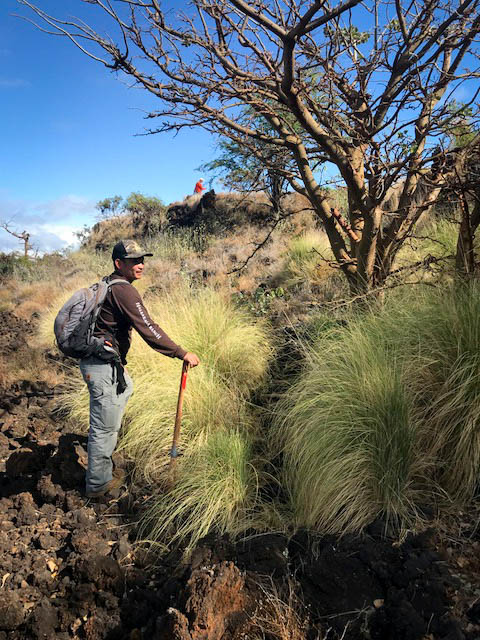Differences in both the physical structure and growth characteristics contribute to different rates of transpiration between native and invasive species. Tom Giambelluca is looking closely at those differences.
Kia'i Moku Column
Tiny golden butterfly could help halt miconia invasion
A tiny butterfly could soon help conservation crews address miconia.
Why can’t you keep rabbits on the ground? “Rabbit fever” affects people
Several years ago, a researcher working with sparrows at a rabbit farm on Maui fell ill. He was feverish and…
Read More
Just the act of observing can help us and our island home
I ka nānā no ka ‘ike.By observing, one learns. ‘Ōlelo No’eau #1186- Mary Kawena Pukui The Hawaiian language includes over…
Read More
Fountain grass threatens dryland ecosystems
On the leeward slope of Haleakalā above Kīhei rises a red dirt cinder cone named Puʻuokali. Puʻuokali means “the hill…
Read More
Help protect the fragile and amazing anchialine pools of Hawaii
Amidst a black canvas of young lava, plant-like bacteria grow…..painting a gold border that divides the brilliant green plants from…
Read More





